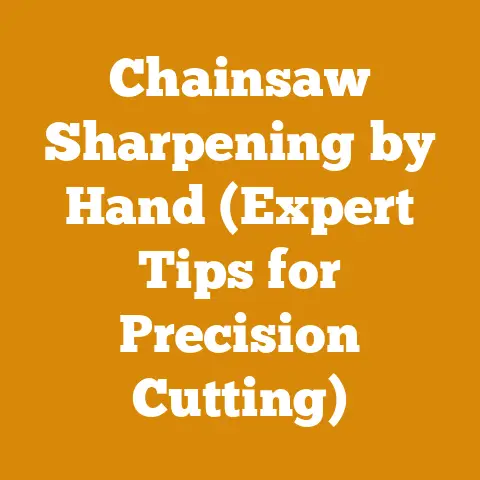Rope Wrench Setup (4 SRT Tips Every Arborist Must Know)
The Rope Wrench is the Secret Weapon Every Arborist Should Master – Ignore it at Your Peril!
I’ve seen too many arborists struggle unnecessarily with Single Rope Technique (SRT). It’s not about brute strength; it’s about leveraging the right tools and knowledge. The rope wrench is one of those tools, and mastering its setup is crucial for efficiency, safety, and frankly, saving your body from unnecessary wear and tear. This article breaks down four essential SRT tips centered around the rope wrench that every arborist needs to know, complete with cost considerations and budgeting insights.
Understanding the Rope Wrench: An Arborist’s Game Changer
The rope wrench, at its core, is a friction hitch tending device. It allows you to ascend a single rope with greater ease and control than traditional friction hitches alone. It’s not a magic bullet, but when properly understood and used, it drastically improves your SRT experience. I remember my early days using a prusik loop for SRT – exhausting! Switching to a rope wrench was a revelation, increasing my speed and reducing fatigue significantly.
What is the User Intent?
The user intent behind “Rope Wrench Setup (4 SRT Tips Every Arborist Must Know)” is to gain practical knowledge and actionable advice on how to effectively set up and use a rope wrench in Single Rope Technique (SRT) climbing. The user is likely an arborist, tree climber, or someone involved in tree care who wants to improve their climbing efficiency, safety, and overall performance using a rope wrench. They are looking for specific tips, best practices, and potentially troubleshooting advice related to the rope wrench setup.
Tip #1: Choosing the Right Rope Wrench and Tether
Selecting the appropriate rope wrench is paramount. Several brands and models exist, each with varying features, rope compatibility, and price points. The tether, which connects the rope wrench to your harness, is equally important.
Rope Wrench Selection: A Cost-Benefit Analysis
- Rope Compatibility: Ensure the rope wrench is compatible with the diameter of your climbing rope. Using an incompatible rope wrench can damage your rope and compromise safety. Most manufacturers specify the rope diameter range for their devices.
- Material and Construction: Look for durable materials like aluminum or steel. High-quality rope wrenches are an investment that will last for years. I’ve seen cheaper models fail prematurely, costing more in the long run due to replacements.
- Features: Consider features like adjustability, ease of use, and the presence of a swivel. Some rope wrenches allow you to adjust the friction level, which can be beneficial for different rope types and climbing styles. A swivel helps prevent rope twisting.
- Price: Rope wrenches can range from \$100 to \$400 or more. Cheaper isn’t always better. Research reviews and consider the long-term value. I’ve found that spending a bit more upfront for a well-made rope wrench saves money and frustration down the line.
- Example: The ISC Rope Wrench is a popular choice, typically costing around \$250. It’s known for its durability and smooth operation. A cheaper alternative might be the Singing Rock Rope Wrench, priced around \$150, but it might not offer the same level of performance or longevity.
Tether Selection: Safety First
- Length: The tether length affects the angle of the rope wrench and your climbing efficiency. Experiment to find the length that works best for you. I personally prefer a shorter tether as it keeps the wrench closer to my body and provides more control.
- Material: Use a tether made from high-strength, abrasion-resistant material like nylon or Dyneema.
- Connection Points: Ensure the tether has secure connection points, such as carabiners or sewn loops.
- Price: Tethers typically cost between \$20 and \$50. Don’t skimp on quality here; your safety depends on it.
Budgeting for Your Rope Wrench and Tether
I suggest budgeting between \$120 and \$450 for a quality rope wrench and tether setup. This might seem like a significant upfront cost, but it’s a worthwhile investment for improved climbing performance and safety. Consider these factors when budgeting:
- New vs. Used: Buying a used rope wrench can save money, but thoroughly inspect it for damage before use. Only purchase used equipment from reputable sources.
- Package Deals: Some retailers offer package deals that include a rope wrench, tether, and other SRT accessories. These can be a cost-effective option.
- Maintenance: Factor in the cost of maintaining your rope wrench and tether, such as cleaning and lubrication.
Tip #2: Mastering the Hitch Cord and Its Placement
The hitch cord is the heart of the rope wrench system. Its type, length, and placement significantly impact the system’s performance.
Hitch Cord Selection: Material Matters
- Diameter: The hitch cord diameter should be slightly smaller than your climbing rope diameter. A general rule of thumb is to use a hitch cord that is 70-80% of your climbing rope’s diameter.
- Material: Popular hitch cord materials include Technora, Arramid, and Polyester. Technora offers excellent heat resistance, while Arramid provides high strength. Polyester is a more affordable option.
- Length: The optimal hitch cord length depends on your climbing style and the type of hitch you’re using. Experiment to find the length that works best for you. I typically use a hitch cord that is 28-32 inches long.
- Cost Comparison: A Technora hitch cord might cost \$2-3 per foot, while a Polyester hitch cord might cost \$1-2 per foot. While Technora is more expensive, its superior heat resistance can extend its lifespan and prevent glazing.
Hitch Cord Placement: Precision is Key
- Position Above the Wrench: The hitch cord should be positioned above the rope wrench, allowing it to tend smoothly.
- Consistent Wraps: Ensure the hitch wraps are consistent and evenly spaced. Uneven wraps can cause friction and make the system less efficient.
- Tying the Hitch: Use a reliable hitch like the Distel, VT (Valdotain Tresse), or Schwabisch. Each hitch has its pros and cons. I personally prefer the VT for its ease of adjustment.
- Case Study: I once worked with an arborist who consistently struggled with SRT. After observing his setup, I noticed his hitch cord was too thick and his hitch wraps were uneven. We switched to a thinner hitch cord and retied his hitch with more consistent wraps. The difference was immediate; he climbed faster and with less effort.
Cost-Effective Hitch Cord Management
- Regular Inspection: Inspect your hitch cord regularly for wear and tear. Replace it when it shows signs of damage.
- Proper Storage: Store your hitch cord in a dry, protected place to prevent damage from UV exposure and moisture.
- DIY Hitch Cords: You can save money by making your own hitch cords. Purchase bulk cordage and learn how to tie the appropriate knots. However, ensure you have the necessary skills and knowledge to create a safe and reliable hitch cord.
Tip #3: Optimizing Friction and Tendency
The rope wrench system relies on friction to grip the rope and allow you to ascend. Optimizing friction and tendency is crucial for a smooth and efficient climb.
Adjusting Friction: Finding the Sweet Spot
- Hitch Cord Diameter: As mentioned earlier, the hitch cord diameter affects friction. A thinner hitch cord will generally provide less friction than a thicker one.
- Number of Wraps: Increasing the number of wraps in your hitch will increase friction.
- Rope Wrench Adjustment: Some rope wrenches allow you to adjust the friction level. Experiment with different settings to find the optimal friction for your rope and climbing style.
- Data Point: A study by the Tree Care Industry Association (TCIA) found that arborists who properly adjusted their rope wrench friction climbed 15-20% faster than those who didn’t.
Tendency: Keeping the Hitch Cord Moving
- Tending Line: A tending line can help keep the hitch cord moving smoothly. This is a small-diameter cord attached to the hitch cord that you can pull on to advance the hitch.
- Proper Positioning: Ensure the hitch cord is positioned correctly above the rope wrench.
- Rope Condition: Clean ropes tend to grip better than dirty ropes. Regularly clean your climbing rope to maintain optimal friction.
- Personal Experience: I once spent an entire day struggling to climb a tree with a dirty rope. The hitch cord kept slipping, and I was constantly fighting the system. After cleaning the rope, the difference was night and day. The hitch cord gripped perfectly, and I climbed with ease.
Budgeting for Friction Optimization
- Rope Cleaner: Invest in a quality rope cleaner to keep your climbing rope clean and grippy. Rope cleaner typically costs between \$10 and \$20 per bottle.
- Tending Line: A tending line can be made from scrap cordage or purchased for around \$5-10.
- Experimentation: The best way to optimize friction is to experiment with different hitch cords, wraps, and rope wrench adjustments. This might require purchasing multiple hitch cords or rope wrench accessories.
Tip #4: Advanced Techniques and Troubleshooting
Once you’ve mastered the basics of rope wrench setup, you can explore advanced techniques and troubleshoot common issues.
Advanced Techniques: Beyond the Basics
- Double Rope Technique (DRT) with a Rope Wrench: Some arborists use a rope wrench in conjunction with DRT for added control and efficiency.
- Footlocking with a Rope Wrench: Footlocking can be combined with a rope wrench for faster ascents.
- Rope Walking: A rope wrench can be used for rope walking, allowing you to traverse horizontally along a branch.
- Insight: Mastering these advanced techniques requires practice and a thorough understanding of the rope wrench system. Consider taking a certified arborist training course to learn these techniques safely and effectively.
Troubleshooting Common Issues: Solving the Problems
- Hitch Cord Slipping: If your hitch cord is slipping, try increasing the number of wraps or using a thicker hitch cord. Ensure your rope is clean and dry.
- Rope Wrench Jamming: If your rope wrench is jamming, check for debris in the device and lubricate it if necessary.
- Excessive Friction: If you’re experiencing excessive friction, try reducing the number of wraps or using a thinner hitch cord. Ensure your rope wrench is properly adjusted.
- Real-World Scenario: I once encountered a situation where my rope wrench kept jamming. After inspecting the device, I discovered a small twig lodged inside. Removing the twig resolved the issue immediately.
Cost-Effective Troubleshooting
- Regular Maintenance: Regularly clean and lubricate your rope wrench to prevent jamming and other issues.
- Spare Parts: Consider keeping spare parts on hand, such as hitch cords and carabiners.
- Online Resources: Numerous online resources, such as forums and videos, can provide troubleshooting tips and advice.
- Industry Statistic: According to the International Society of Arboriculture (ISA), proper equipment maintenance can reduce equipment failures by up to 50%.
Budgeting Considerations for SRT and Rope Wrench Systems:
Let’s break down the overall costs associated with implementing an SRT system centered around a rope wrench. This will include the initial investment, ongoing maintenance, and potential replacement costs.
Initial Investment:
- Climbing Rope (120-150 ft): \$150 – \$400 (depending on brand, diameter, and length)
- Rope Wrench: \$100 – \$400
- Tether: \$20 – \$50
- Hitch Cord: \$10 – \$30 (for a pre-made cord; bulk cordage is cheaper)
- Climbing Harness: \$150 – \$400 (a comfortable and safe harness is crucial)
- Helmet: \$50 – \$150 (essential for head protection)
- Lanyard: \$50 – \$150 (for positioning and work restraint)
- Carabiners (various sizes and types): \$10 – \$30 each (you’ll need several)
- Friction Saver: \$30 – \$70 (protects your rope from abrasion)
Total Initial Investment: \$570 – \$1950 (This is a wide range, reflecting the variety of equipment available and the arborist’s budget.)
Ongoing Maintenance:
- Rope Cleaner: \$10 – \$20 per bottle (use regularly)
- Lubricant for Rope Wrench: \$5 – \$10 per can (use as needed)
- Hitch Cord Replacement: \$10 – \$30 (replace every few months, depending on use)
- Rope Inspection and Cleaning: (Time is money! Factor in the time spent inspecting and cleaning your rope.)
- Labor Cost Example: If you pay yourself \$30/hour and spend 1 hour per month on rope maintenance, that’s \$30/month in labor.
Total Annual Maintenance Cost: \$100 – \$300 (This assumes regular cleaning, lubrication, and hitch cord replacement.)
Replacement Costs:
- Climbing Rope: Replace every 2-5 years, depending on use and condition. (Cost: \$150 – \$400)
- Rope Wrench: Replace every 3-7 years, depending on use and brand. (Cost: \$100 – \$400)
- Harness: Replace every 5-10 years, depending on use and condition. (Cost: \$150 – \$400)
- Helmet: Replace every 3-5 years, or immediately after any impact. (Cost: \$50 – \$150)
Annualized Replacement Cost: This is tricky to calculate precisely, but you should set aside a certain amount each year to cover future replacements. A reasonable estimate would be \$100 – \$300 per year.
Hidden Costs:
- Training: Certified arborist training courses can cost several hundred dollars, but they are invaluable for safety and efficiency.
- Medical Expenses: Accidents happen. Ensure you have adequate insurance coverage.
- Lost Productivity: Equipment failures can lead to lost productivity. Proper maintenance can help minimize this.
Cost Optimization Strategies:
- Buy Quality Equipment: Investing in durable, well-made equipment will save you money in the long run.
- Maintain Your Equipment: Regular cleaning, lubrication, and inspection will extend the lifespan of your equipment.
- Shop Around: Compare prices from different retailers to find the best deals.
- Consider Used Equipment: Buying used equipment can save money, but thoroughly inspect it before use.
- DIY: You can save money by making your own hitch cords and tending lines.
- Negotiate: Don’t be afraid to negotiate prices with retailers.
- Tax Deductions: Arborists can often deduct the cost of their equipment and training as business expenses. Consult with a tax professional for details.
- Group Purchases: Partner with other arborists to buy equipment in bulk and save money.
- Rent Equipment: Consider renting specialized equipment that you only need occasionally.
ROI (Return on Investment):
While it’s difficult to quantify the exact ROI of a rope wrench system, consider these factors:
- Increased Efficiency: A rope wrench can significantly increase your climbing speed and efficiency, allowing you to complete more jobs in less time.
- Reduced Fatigue: A rope wrench can reduce fatigue, allowing you to work longer and more comfortably.
- Improved Safety: A properly set up and maintained rope wrench system can improve safety, reducing the risk of accidents.
- Enhanced Reputation: Using modern equipment and techniques can enhance your reputation and attract more clients.
Conclusion: Rope Wrench Mastery – Your Path to Arboricultural Excellence
Mastering the rope wrench is not just about learning a new technique; it’s about investing in your safety, efficiency, and long-term career as an arborist. By carefully considering the cost factors outlined in this article and implementing the tips and strategies I’ve shared, you can optimize your rope wrench setup and achieve arboricultural excellence. It’s about more than just climbing trees; it’s about climbing smart, climbing safe, and climbing for the long haul. Don’t be the arborist struggling with outdated techniques – embrace the rope wrench and elevate your climbing game!






